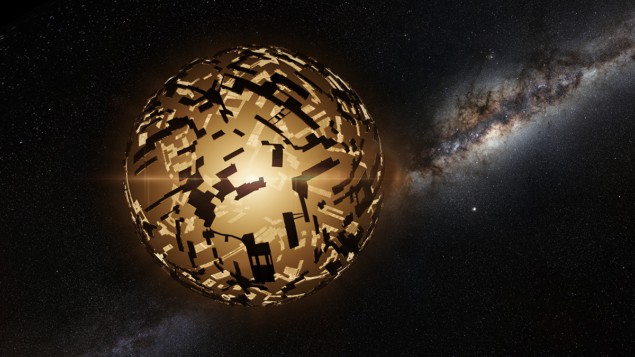
The Search for Extraterrestrial Intelligence (SETI) might want to add quantum communication to its list of ways for aliens to get in touch. According to calculations by researchers at the University of Edinburgh in the UK, quantum signals would be a viable means of establishing contact across interstellar distances – a result that also suggests we might need to update our technology to recognize any such signals coming in our direction.
This finding might seem surprising, given that setting up quantum links here on Earth has proven no easy task. Such links are based on creating entanglement between individual nodes and teleporting quantum states between them, but these states are fragile, and their tendency to decohere – that is, to lose their quantum nature – limits the stability of the links. Interstellar links, therefore, represent a bold step forward. Could quantum information survive the hostile space environment during a journey towards an interstellar receiver?
Effects of interstellar disturbances
To answer this question, the Edinburgh researchers calculated the likely impact of various disturbances a quantum signal could encounter. One such disturbance is gravity, which could cause quantum states to decohere and signals to lose fidelity. However, the researchers computed that a photon could travel 127 light-years before such decoherence comes into play, meaning that a considerable number of stars with known exoplanets are within reach.
The impact of space travel on the fidelity, or quality, of a quantum signal is slightly different, because decoherence is not the only contributor. “High fidelity” means being able to fully process a quantum signal once it is received. This parameter can be quantified by considering a relativistic effect known as Wigner rotation that can change the signal’s phase, resulting in a loss of fidelity while coherence remains intact. However, the researchers note that if the receiver knows the signal’s origin, they would in principle be able to estimate the magnitude of this effect and calculate the signal’s original phase.
Besides gravity, several other factors could disrupt the quantum state of a photon. Interstellar space contains a distribution of electrons, photons, hydrogen atoms and some heavier elements. Locally, such particles can also come from our own Sun. But when the researchers calculated the probability of a signal photon interacting with any of these, they found that the mean free path distance was larger than the observable universe, meaning no considerable interaction can be expected. Photons at X-ray wavelengths, in particular, have longer mean free paths through scattering and absorbing media such as gas and dust, and are less susceptible to interference from large magnetic fields, making them favourable for quantum communication.
ET teleport home?
Finally, the researchers considered the question of why an extraterrestrial civilization might choose quantum communication over classical signals. According to Arjun Berera, a physicist at Edinburgh and lead author of a paper on the research in Physical Review D, there are some benefits. One is that the quantum nature of the signal would be a sign that it comes from an intelligent source rather than a natural process. Another is that quantum communication makes it possible to pack a lot of information into the signals, especially when utilizing higher-dimensional entangled states.

Alien astronomers on hundreds of nearby exoplanets could have spotted life on Earth
Michael Hippke, an expert on interstellar communication who is affiliated with Germany’s Sonneberg Observatory, calls the new research “an excellent contribution to the field” because it shows that quantum photons can travel over interstellar distances without losing coherence. As for whether other civilizations (if they exist) could communicate with quantum light, Hippke, who was not involved in the latest research, describes the idea as plausible. “We should look for that,” he says. He adds that identifying the X-ray region of the electromagnetic spectrum as a potential carrier is important, though he notes that any attempt to detect such a signal would have to be carried out in space because the Earth’s atmosphere absorbs most X-rays.
Berera says that the team’s next step is to establish whether any natural astrophysical sources could also produce coherent quantum photon states. “It would be an important question to answer before we start focusing our attention on the quantum route for finding ETs,” he says.



